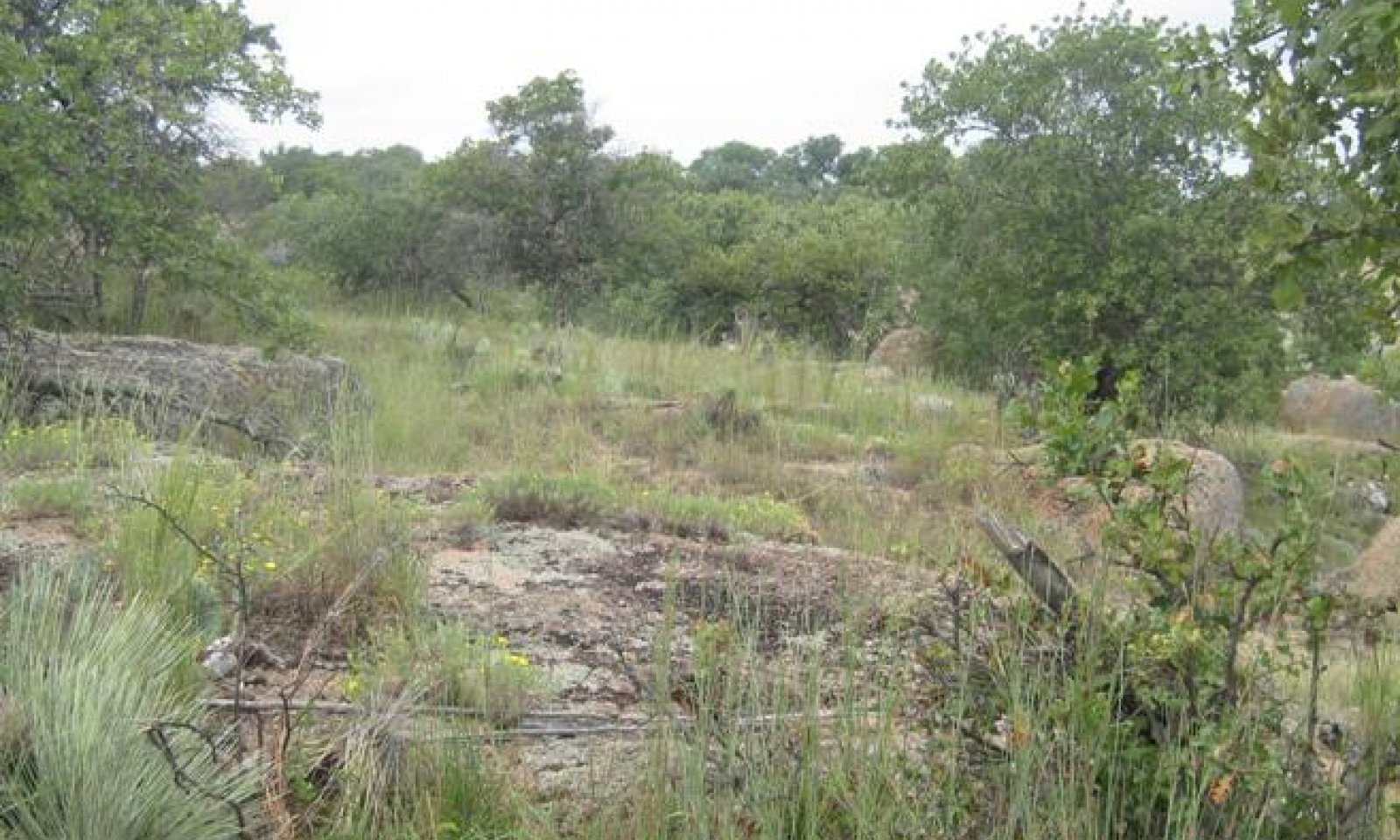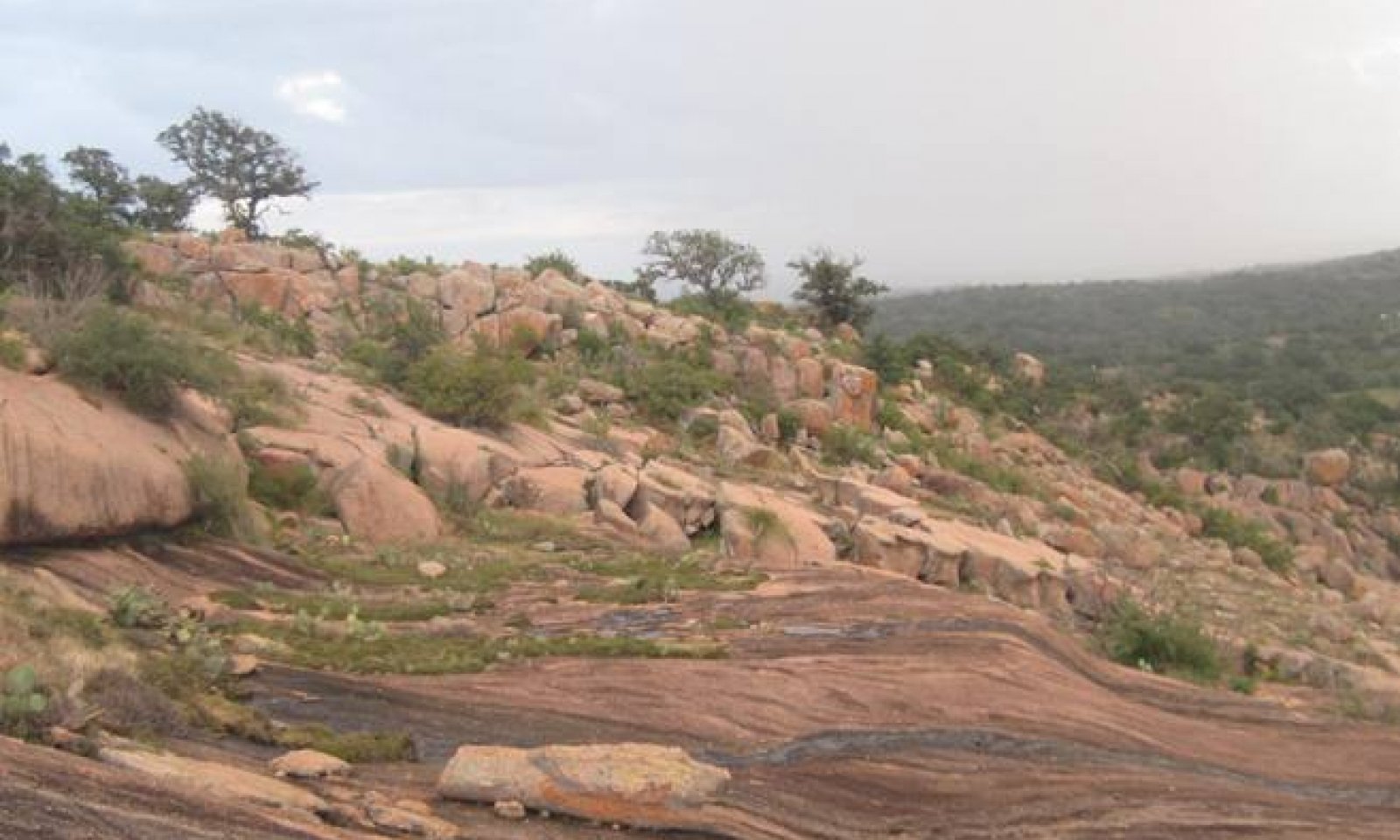
Shallow Granite 25-32 PZ
Scenario model
Current ecosystem state
Select a state
Management practices/drivers
Select a transition or restoration pathway
- Transition T1A More details
- Transition T1B More details
- Restoration pathway R2A More details
- Transition T2A More details
- Transition T3A More details
-
No transition or restoration pathway between the selected states has been described
Target ecosystem state
Select a state
State 1
Savannah State







Description
The Savannah State consists of two plant communities: the Little Bluestem/Oak Savannah Community (1.1) and the Mixed Grass/Oak Community (1.2). The Little Bluestem/Oak Savannah Community occurred on this ecological site in a dynamically shifting mosaic over time with the Mixed Grass/Oak Savannah Community. The two communities in the Savannah State shifted between one another depending on the frequency and intensity of grazing, drought, and other growing season stresses. Unlike most other Central Basin sites, the woody component is relatively constant and not as driven by fire. The understory has large gaps and limited production so that it does not provide continuous fine fuels. Without continuous fine fuels, fires rarely burn hot enough to kill mature trees and shrubs. Fire has some influence on this site but mainly along the “seams” where the fine fuels are. Grazing management can drive the shift between the two communities in the Savannah State.
Prior to settlement, Shallow Granite sites had a savannah appearance with open areas dominated by mid grasses (little bluestem and sideoats grama) interspersed with scattered mottes dominated by oaks. Little Bluestem/Oak Savannah (1.1) may have up to 15 percent canopy cover while the Mixed Grass/Oak Savannah (1.2) will have more than 15 percent woody canopy. This transition to the Mixed Grass/Oak Savannah Community (1.2) is dependent on the degradation of the herbaceous community. With proper grazing and favorable climate conditions, little bluestem and other midgrasses will remain the dominant component of the understory.
Submodel
State 2
Shortgrass Savannah State




Description
This state contains a single community, the Shortgrass Savannah Community (2.1). The Shortgrass Savannah State (2.0) is characterized by a shortgrass-dominated understory with scattered trees and shrubs. The hardwoods that made up a portion of the plant community in the Savannah State will likely be present in the Shrubland State. The transition to the Shortgrass Savannah State will probably not cause an increase in the number or biomass production of hardwoods. However, because the production of herbaceous species will decline, the relative species composition of shrubs and trees will increase.
Long-term improper grazing management will drive the site across a threshold to the Shortgrass Savannah State (2.0). This state is characterized by a loss (or severe reduction) in the midgrasses that dominate the Savannah State (1) communities. Instead, shortgrasses, unpalatable grasses and forbs, and annual grasses and forbs will dominate the understory. Bare ground, erosion, and water flow patterns will increase. Forage production will decline. Trees and shrubs remain a part of the community, but woody species composition may vary greatly. The woody component may be similar to the woody component in the Little Bluestem/Oak Savannah community (1.1). Mature oaks occur in mottes with scattered brush, though the woody component is more frequently made up of many species of widely scattered shrubs.
Submodel
State 3
Eroded State




Description
This state is characterized by a single community, the Eroded Community (3.1).
The Eroded State has the potential to be a terminal state. Due to the relatively high risk of severe soil erosion of the sandy loam soils, this site can erode to the point where there is a loss of soil functionality. When this level of erosion occurs, the site loses soil structure, soil fertility, organic matter, and/or soil microflora. There are examples of the loss of the A and B horizons and some with the soil eroded to bedrock. Once the site loses soil horizons or soil functions, it is very difficult or impossible to return the site to one of the other States, resulting in State 3 being a terminal state. Return to another state will be the result of site restoration efforts, not typical management changes.
Steeper portions of this site are subject to severe erosion when the plant cover is disturbed. Some examples of the site have eroded to the granite bedrock.
Submodel
Mechanism
The driver for Transition T1A is improper grazing management that causes a loss of palatable midgrasses and forbs. This transition is indicated by the decrease of dominant reference state midgrasses (little bluestem and sideoats grama) to less than 10 percent of species composition of the herbaceous community. Once these species are lost from the community or present only in trace amounts, grazing management usually cannot create a shift back to the reference community.
Evidence from sites with long-term growing season deferment (30+ years) shows that recovery is possible back across this threshold unless erosion has removed the soil.
Mechanism
Severe soil degradation can be caused by abusive grazing or other soil-disturbing activities including rock harvest. In some cases, this erosion can be extreme enough to result in the loss of the entire soil layer. Long-term drought may also trigger this transition from the Savannah State (1.0) or exacerbate the effects of inappropriate grazing management on the Shallow Granite site.
When the Shallow Granite site is subjected to inappropriate management, the effects may be seen in a loss of vegetative cover followed by a loss of soil. In some cases, this erosion can be extreme enough to result in the loss of the A (and even B) horizons. Severe soil degradation can be caused by abusive grazing, mismanaged brush control, or other soil-disturbing activities including rock harvest or gravel mining. This loss of soil accompanies the loss of the vegetative cover associated with this site.
Mechanism
The driver for Restoration Pathway R2A is a restoration of the herbaceous community. Establishment of native grasses is difficult and dependent upon natural seeding from remnant patches and seed banks. This site is often too shallow for effective reseeding.
Proper grazing management and stocking rates maintain the herbaceous layer in this state. With proper grazing management, midgrasses can regain dominance on the site and undesirable trends in soil organic matter, fertility, temperature, and erosion can be arrested and reversed. The extent to which the original Little Bluestem/Oak Savannah Community (1.1) can be re-established will depend on the extent to which soil physical and chemical properties were altered during retrogression (Heitschmidt and Stuth 1991).
Relevant conservation practices
| Practice | External resources |
|---|---|
|
Brush Management |
|
|
Prescribed Burning |
|
|
Prescribed Grazing |
Mechanism
The driver for this transition is abusive management. The effects may be seen in a loss of vegetative cover followed by a loss of soil. In some cases, this erosion can be extreme enough to result in the loss of the A (and even B) horizons. Severe soil degradation can be caused by abusive grazing or other soil-disturbing activities including rock harvest. This loss of soil results in or accompanies the loss of the vegetative cover associated with this site. Long-term drought may also trigger this transition from the Shortgrass Savannah State (2.0) or exacerbate the effects of inappropriate grazing management on the Shallow Granite site.
Mechanism
The Eroded State is frequently a terminal state. Transitions to the Shrubland State (2.0) are uncommon due to the pronounced loss of soil chemistry and structure and the decline of native plant communities.
Transition T3A is “let go.” Severe loss of soil and soil properties will make restoration difficult and expensive, as it may require seedbed preparation and seeding of native grass and forb species.
Without brush management or fire, woody species may repopulate the site if soil resources are adequate.
Model keys
Briefcase
Add ecological sites and Major Land Resource Areas to your briefcase by clicking on the briefcase (![]() ) icon wherever it occurs. Drag and drop items to reorder. Cookies are used to store briefcase items between browsing sessions. Because of this, the number of items that can be added to your briefcase is limited, and briefcase items added on one device and browser cannot be accessed from another device or browser. Users who do not wish to place cookies on their devices should not use the briefcase tool. Briefcase cookies serve no other purpose than described here and are deleted whenever browsing history is cleared.
) icon wherever it occurs. Drag and drop items to reorder. Cookies are used to store briefcase items between browsing sessions. Because of this, the number of items that can be added to your briefcase is limited, and briefcase items added on one device and browser cannot be accessed from another device or browser. Users who do not wish to place cookies on their devices should not use the briefcase tool. Briefcase cookies serve no other purpose than described here and are deleted whenever browsing history is cleared.
Ecological sites
Major Land Resource Areas
The Ecosystem Dynamics Interpretive Tool is an information system framework developed by the USDA-ARS Jornada Experimental Range, USDA Natural Resources Conservation Service, and New Mexico State University.


